A natural minded nurse’s best medicinal herbs to always have in your home.
I have been studying and using medicinal herbs for many years now. I initially turned to herbs when the medical model could not solve my migraines, infertility and a host of other ailments. Along with other lifestyle and food changes, I have been able to change my health around for the better.
The herbs in this article are my top favorites and was it ever so hard to choose only a few! You will find that once you dive into the world of herbs, it’s like chicken math (if you know you know). You never have enough and always want more or to try a new herb.
I have been able to successfully bridge the gap between allopathic and holistic medicine for me and my family now for many years. I hope that this is an easy jumping off point for you as you continue to learn about medicinal herbs.
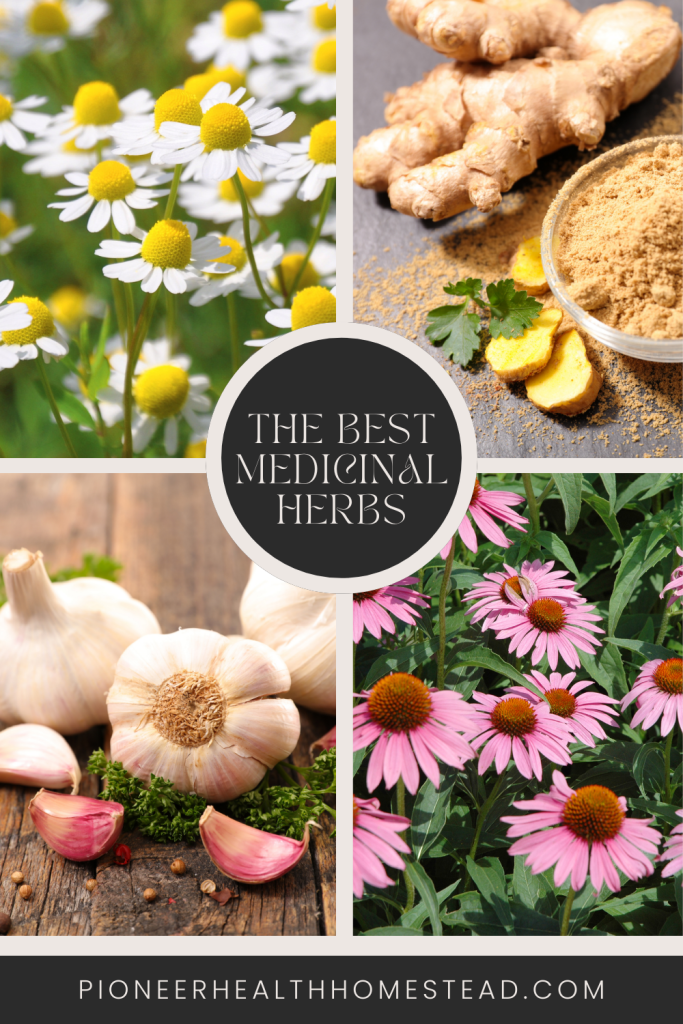
Medicinal herbs
Products made from botanicals, or plants, that are used to treat diseases or to maintain health are called medicinal herbs or supplements.
Herbal supplements come in all forms: dried, chopped, powdered, capsule, or liquid, and can be used in various ways, including:
- Swallowed as pills, powders, or tinctures
- Brewed as tea
- Applied to the skin as gels, lotions, or creams
- Added to bath water
Caution and education on medicinal herbs should always be taken. Herbal supplements can interact with conventional medicines or have strong effects. Just because medicinal herbs are natural does not mean that they are harmless if taken incorrectly.
Buying/Sourcing
There are many different places you can source your herbs from. These are the select few companies I’ve ordered from and had very good results.
I cannot recommend Mountain Rose Herbs enough. They are a phenomenal company and with that they tend to be on the pricier side. Not on everything but on most.
Another online store is Frontier Co-op. You’re also able to buy their products on Amazon, but I don’t recommend that always as I’ve been given herbs listed as organic and once received that lovely organic logo is nowhere to be found.
See my resources page for more sourcing of herbs and DIY items.
Medicinal Herbs Education
I highly recommend any books by Rosemary Gladstar. She is by far the most knowledgeable person I have come across thus far. Her books are written for beginners and full of knowledge.
There are also many different online herbal schools/courses you can take:
- Herbal Academy – Best Online Herbalism Education (theherbalacademy.com)
- Master Herbalist Diploma – Centre of Excellence
- Herbal Medicine | American College of Healthcare Sciences (achs.edu)
Why these medicinal herbs?
I chose these herbs because they have a wide spectrum of uses, they’re common enough to be found easily and more than likely you may already have some of these in your kitchen.
Elderberry
Elder (Sambucus canadensis, S. nigra) is a perennial shrub that can be found growing along hedgerows, forest perimeters, and in gardens as an ornamental. Both the elderberry and the elder flower are used medicinally, jams/jellies and even wine.
The most popular herbal cold and flu remedy. Elderberries can help lower fevers by inducing sweating (diaphoretic) and have antiviral properties. The elderberry is phenomenal at treating viral infections such as colds, flus, herpes and shingles. While they’re also used for treating upper respiratory infections (URI’s). There is also some research showing anticancer properties as well.
They have Vitamin A, C, bioflavonoids, flavonoids, phenolic compounds, beta-carotene, iron, potassium and phytosterols.
Unfortunately, all parts of the fresh plant are mildly toxic and can cause nausea and diarrhea. The stems, bark and root contain enough residual compounds even dried, to induce nausea.
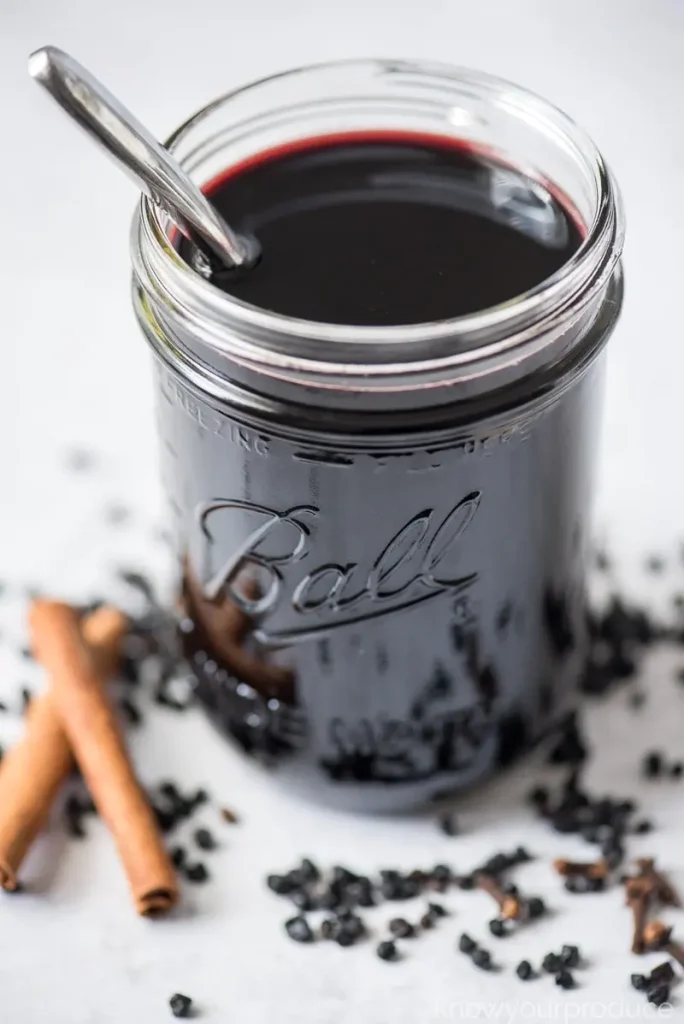
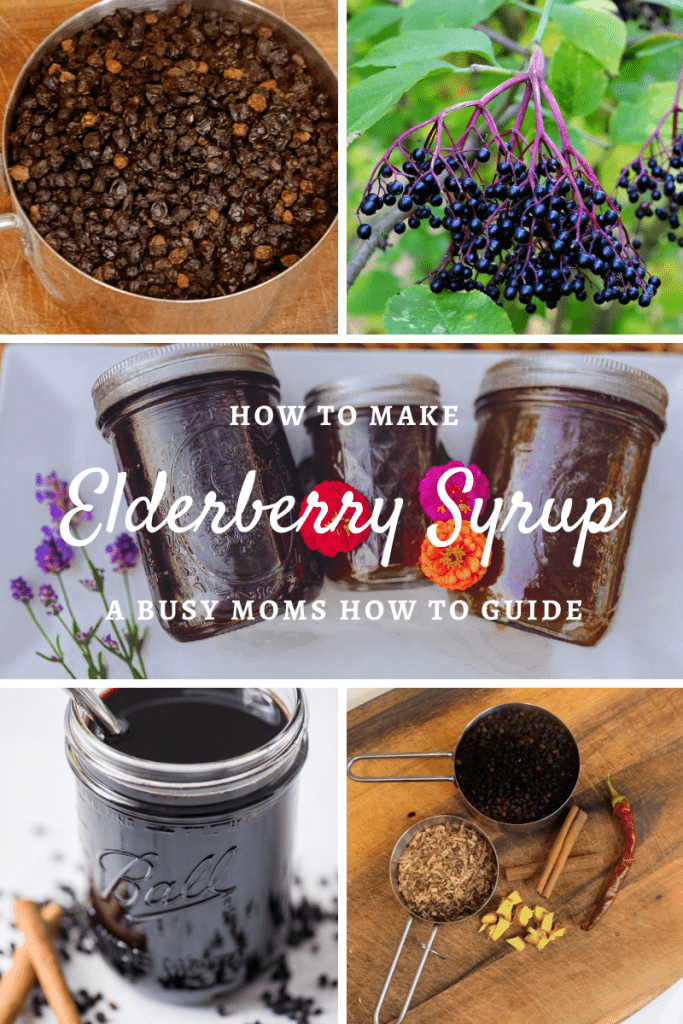
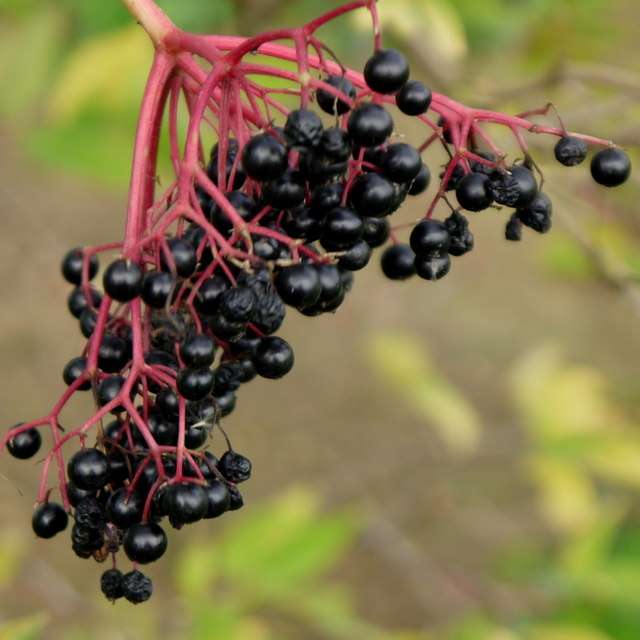
Oregano
Oregano (Origanum vulgare) is a typical staple in any kitchen, oregano is a powerful antifungal, antimicrobial and expectorant. It is useful for respiratory infections and your gastrointestinal system. Oregano is also used for fungal infections, coughs, tonsillitis, bronchitis, asthma and chest congestion.
It can be added to bath or shower to help clear your lungs. Oregano can also be made into a tincture and glycerite.
Oregano should be used sparingly and in low quantities while pregnant. The essential oil can become toxic to your liver, and you should only use topically for up to 7 days and then take a break for at least 72 hours before resuming use.
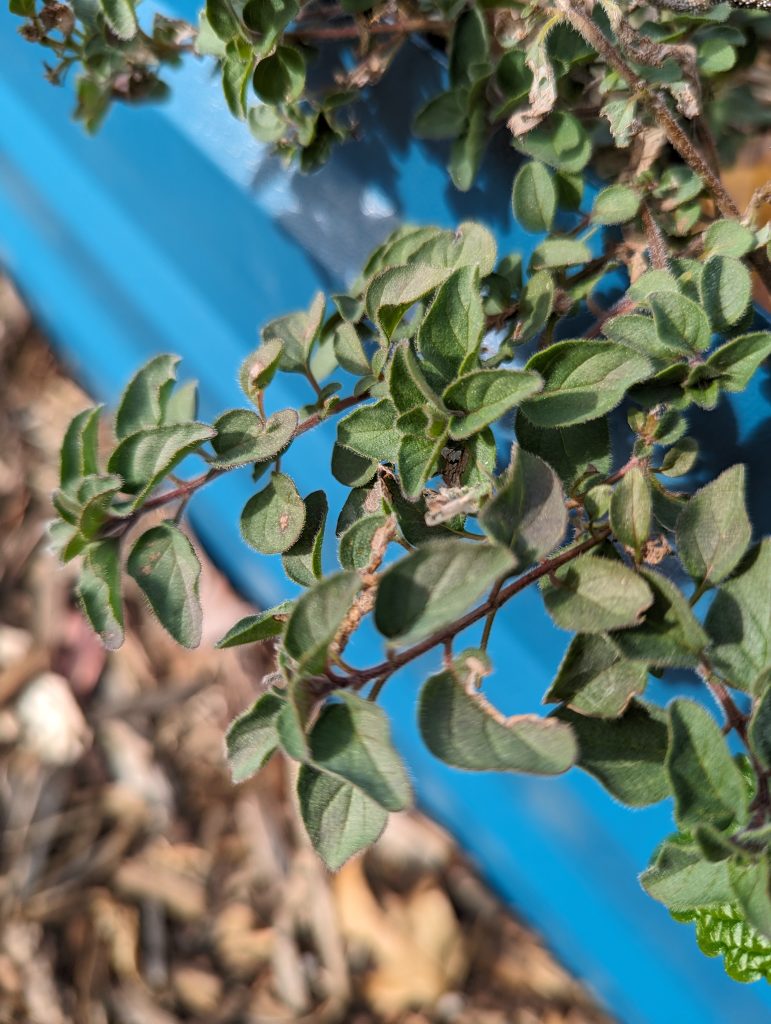
Lavender
Lavender (Lavandula officinalis, syn. L. angustifolia) is a beautifully aromatic herb and is best known for its relaxing properties. It relaxes the nervine system and eases tension and anxiety. Lavender has been shown to be effective as a mild antidepressant and have mild analgesic effect. It can help ease headaches and migraines. The essential oil can be used for antifungal and burn remedies.
Alone or with tea tree oil, it can applied directly to the skin to treat ringworm and nail fungus. It’s also been used well as an antispasmodic to help calm intestinal spasms from irritable bowel syndrome (IBS) and Chron’s disease.
The flowers are used primarily but the leaves can also be used.
This can be used in a standard infusion (best for headaches and migraines), tincture, essential oil and salves.
Lavender is considered safe but should not be consumed while pregnant.
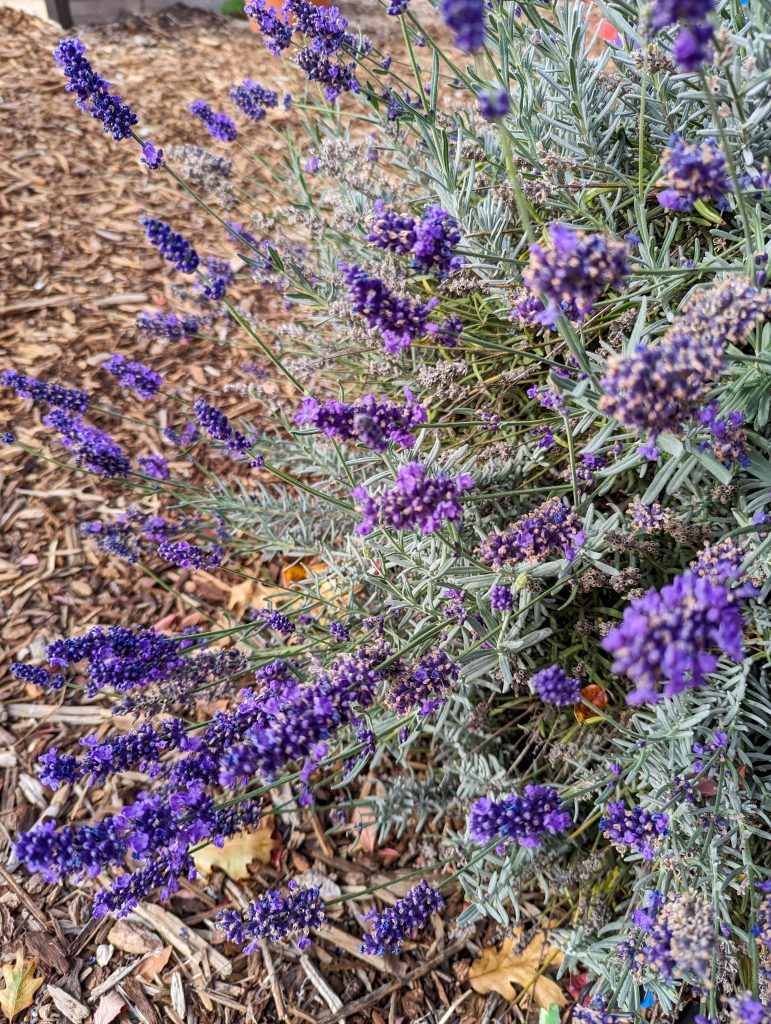
Echinacea
Echinacea (Echinacea angustifolia, E. purpurea) is one of the top immune-boosting herbs, helping to build its strength and to fight of disease and infection. It aids the process of antibody formation and stimulates the production of white blood cells (WBC’s), helps to strengthen and clear lymph nodes, inhibits hyaluronidase, thus prohibiting the spread of infection, while also fighting off viral infections.
Parts used are the root, leaf, flower and even the seed.
It is nontoxic and believed to be harmless but should be used cautiously if you have an autoimmune disorder. Some people can have an allergic reaction and must discontinue use if they experience itchy eyes or ears, runny nose, scratchy throat or other signs of allergy.
Can be used internally as a standard infusion, tincture, glycerite, in syrups, capsules and then topically as well.
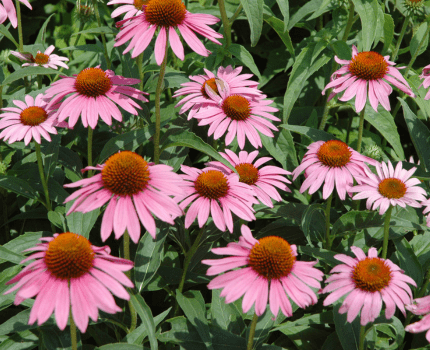
Chamomile
Chamomile (Chamaemelum nobile, Matricaria recutita, and related species) is most commonly known to many as a tea that aids in relaxation. It is a mild sedative and a good gastric anti-inflammatory. It calms nerves, settles the stomach and helps expel gas.
Chamomile is very good for use in infants and children as a tea to treat cholic, hyperactivity, teething, fussiness, fever, or irritability. It can also be applied topically for inflammation.
Parts used are the flower although the leaf can also be used.
Can be used internally as a standard infusion (tea), tincture and glycerite.
Allergic reactions are not common but possible.
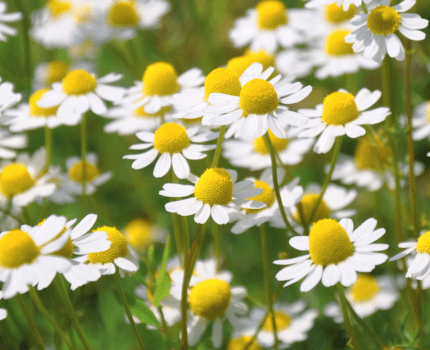
Peppermint
Peppermint (Mentha piperata) renews, refreshes and energizes while also soothing effects on the nervous and gastrointestinal systems. Needless to say, peppermint is a versatile herb. It is widely used in products such as toothpaste, mouthwash, and chewing gum.
Peppermint is an antispasmodic and helps settle the stomach, reduce stomach cramping and spasms, expel gas, anti-emetic, diaphoretic and a mild palliative effect on colds, and fevers. Combined with lavender, it is useful for burns and headache relief.
Parts used are the leaf and flower.
Peppermint can increase heartburn and other gastrointestinal reflux symptoms. It should be used sparingly, if at all, while breastfeeding.
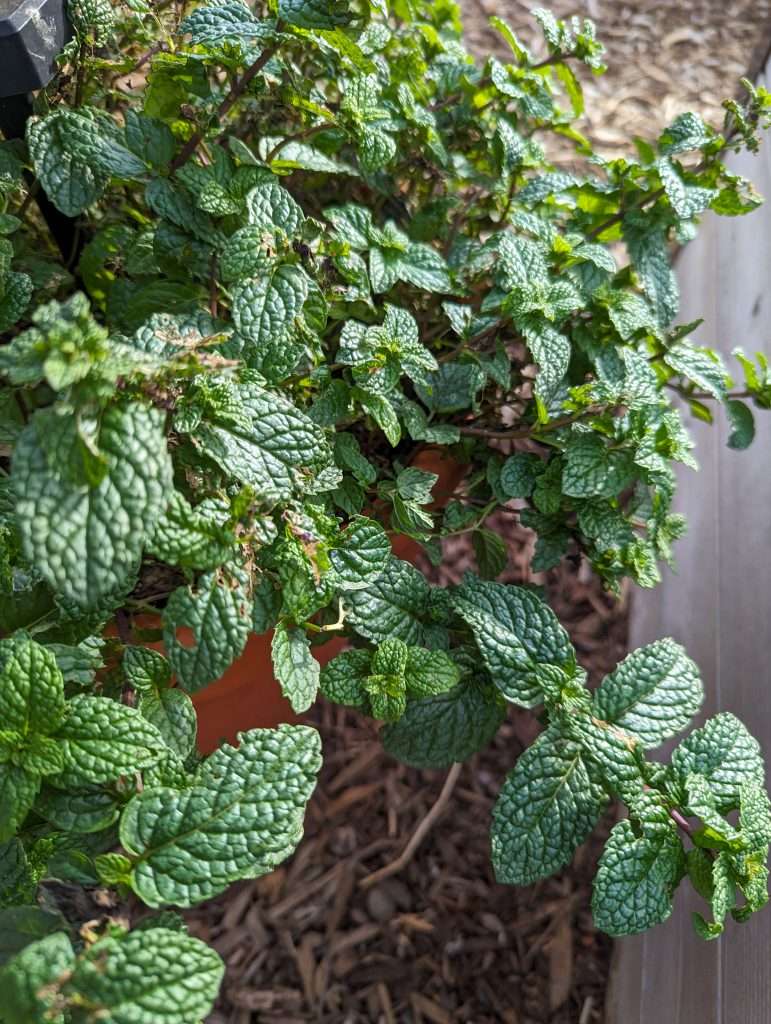
Cinnamon
Cinnamon (Cinnamomum verum) is another common kitchen staple. Most popular form in the kitchen is ground for pies and other baked goods. Because of its wonderful flavor it is often times just used in medicinal remedies for its flavor. However, it is a very powerful and potent medicinal herb. Cinnamon is the bark of trees, member of the laurel family, native to Sri Lanka and India. This bark is high in essential oils, coumarins, tannins and other chemical properties.
Cassia is a close relative of cinnamon and can be used interchangeably.
Because of its stimulating and warming properties, it is used to boost vitality, aid in circulation and can clear congestion. It is well used for gastrointestinal ailments such as bloating and sluggish digestion, while also being known to lower blood sugar levels.
Cinnamon is antiviral, antiseptic, and antifungal and is often indicated for colds and flus. It is a mild emmenagogue making it useful for women experiencing painful menstruation.
Using it in teas, syrups, tinctures, glycerites, capsules/powder and essential oils are the most commonly used.
Caution should be taken when ingestion the essential oil as it can cause kidney damage or coma when used in large amounts. Cinnamon oil and bark are not advised during pregnancy and breastfeeding except in culinary use because of its emmenagogue (stimulates the uterus) properties. Ingesting more than 2 grams daily can cause gastrointestinal irritation.
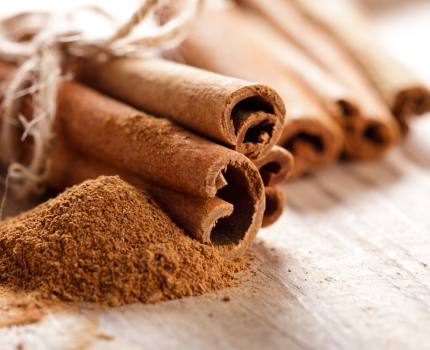
Calendula
Calendula (Calendula officinlis) Is very commonly used topically in salves for healing tissues after injuries, burns and bruises. It is also a useful remedy for dry skin, eczema and hemorrhoids and can ease mild pain. Less commonly known, it is great for gastrointestinal inflammation and is almost specific for Chron’s disease, colitis and gastritis.
The flower is known for its healing effects with promoting cell repair and growth. It is also noted to be antiseptic and anti-inflammatory and able to help prevent infections.
Calendula is one of the best herbs for cleansing the lympathetic system, thus amazing for treating swollen glands. It works by stimulating lymphatic drainage and move congestion out of the body.
Parts used are the flower.
Used in standard infusions, tinctures, glycerites, salves or liniments.
Internal use is contraindicated in pregnancy but completely safe topically.
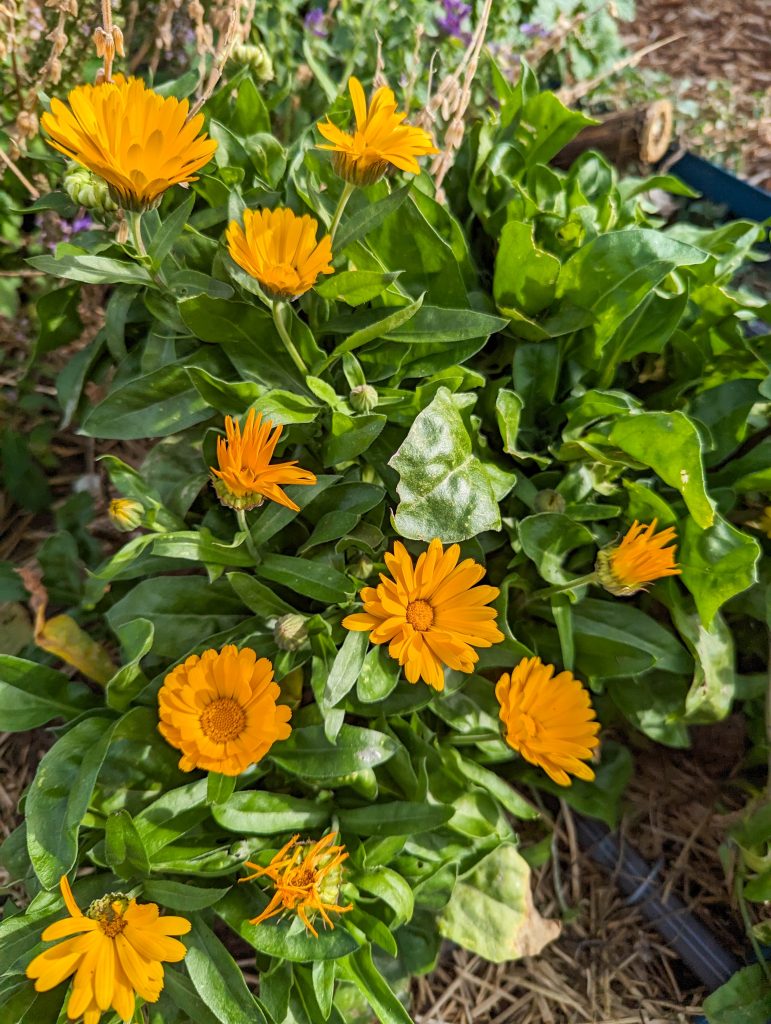
Ginger
Ginger (Zingiber officinale) is a pungent aromatic used to relieve nausea, vomiting and motion sickness. Studies have shown it to rival antinausea drugs for chemotherapy and without their side effects.
Fresh ginger is a potent antiviral and antibacterial, which is helpful in treating influenza, colds and both bacterial and viral gastroenteritis.
Studies have shown that its potent anti-inflammatory properties are as effective as ibuprofen when treating arthritis. Research also shows that ginger root enhances immune system, promotes secretion of bile and gastric fluids and increases blood circulation by inhibiting platelet aggregation (formation).
The only part used is the rhizome (root).
Ginger is used most commonly as a fresh juice and also tinctures, syrups, glycerite and capsules.
Some have cautioned against use in pregnancy, but no adverse reactions have been reported by women using ginger for morning sickness.
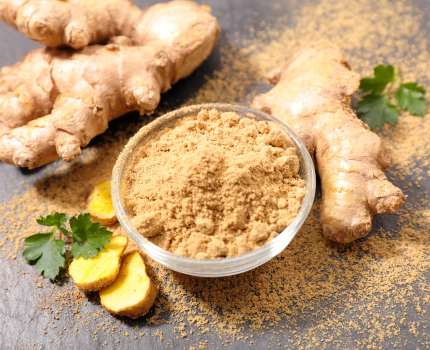
Garlic
Garlic (Allium sativum) is by far my favorite herb to have in my kitchen and medicinal herb arsenal. Not only does everything taste better with garlic, but it improves your health! It is a strong aromatic that acts as an expectorant to expel phlegm from the lungs and as a circulatory tonic to lower high blood pressure. To treat hypertension, it must be taken daily for 3-6 months to see its full effects.
Garlic is also a go to choose for treating colds, flus, sore throats and poor or sluggish digestion. It stimulates the production of white blood cells (WBC’s) thus boosting your immune system, and its sulfur compounds and essential oils make it a potent internal and external antiseptic, antibacterial and antimicrobial agent effective for treating many different types of infections.
The bulb and scapes (hard neck variety) are used.
Can take as a fresh herb or capsule.
Garlic does come with some caution but usually considered safe. For some it can be too much “fire” for their system to handle. In children it can sometimes irritate their stomachs. If you’re breastfeeding and notice your infant becomes fussy afterwards, you may want to avoid it. It can also burn the skin when applied topically.

Comfrey
Comfrey (Symphytum officinale) has been used for generations to aid in the healing of injuries. It is a mucilaginous herb with a slight astringent quality. Comfrey has important minerals needed for healing, but it also contains allantoin, a substance that stimulates cell growth.
Because it stimulates cell growth, it is not advised to apply if a broken bone is suspected until after it can be set or ruled out.
The leaves of comfrey are used.
It is primarily used externally in compresses, poultices and salves. It is no longer recommended to use internally because of concerns about hepatic (liver) toxicity.
Many have taken it internally with no side effects reported, and it is probably safe for short periods. It should be avoided taken internally during pregnancy, lactation, when cancerous tumors are present, or when there is a history of liver problems.
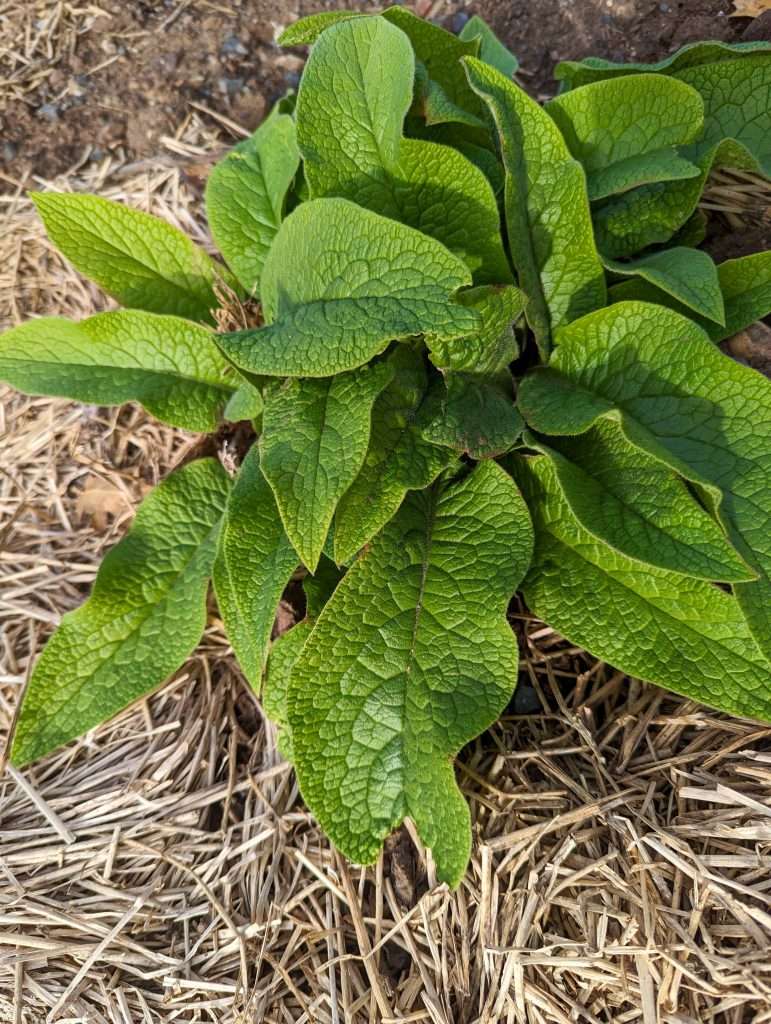
Leave me a comment!
Where are you on your medicinal herb journey? What have you tried that has or hasn’t worked for you?
Disclaimer
I am not a doctor and cannot advise you on how to treat your unique and specific medical conditions(s). Please discuss with your doctor if you have any concerns.
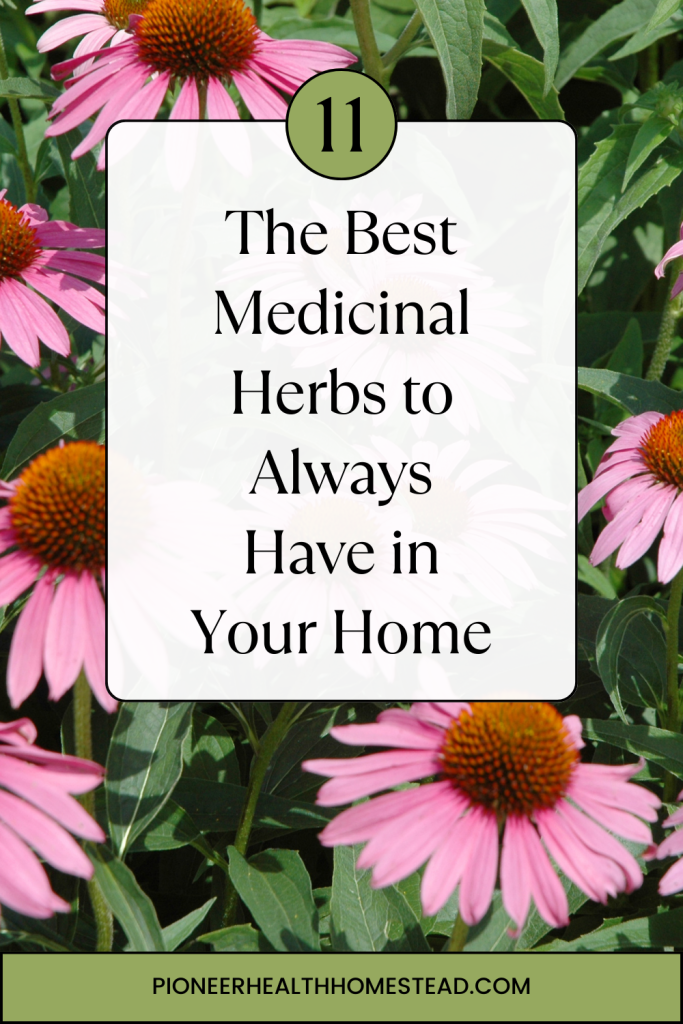
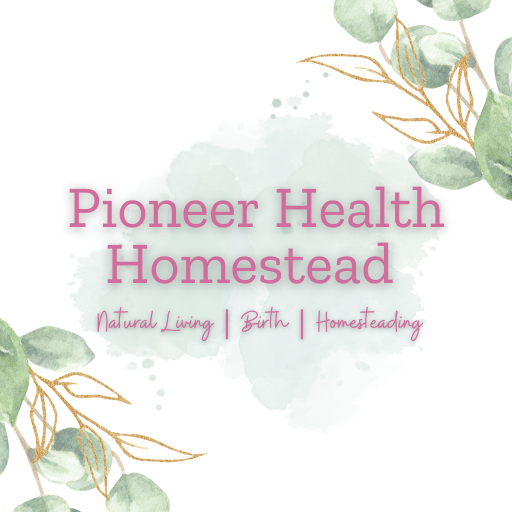
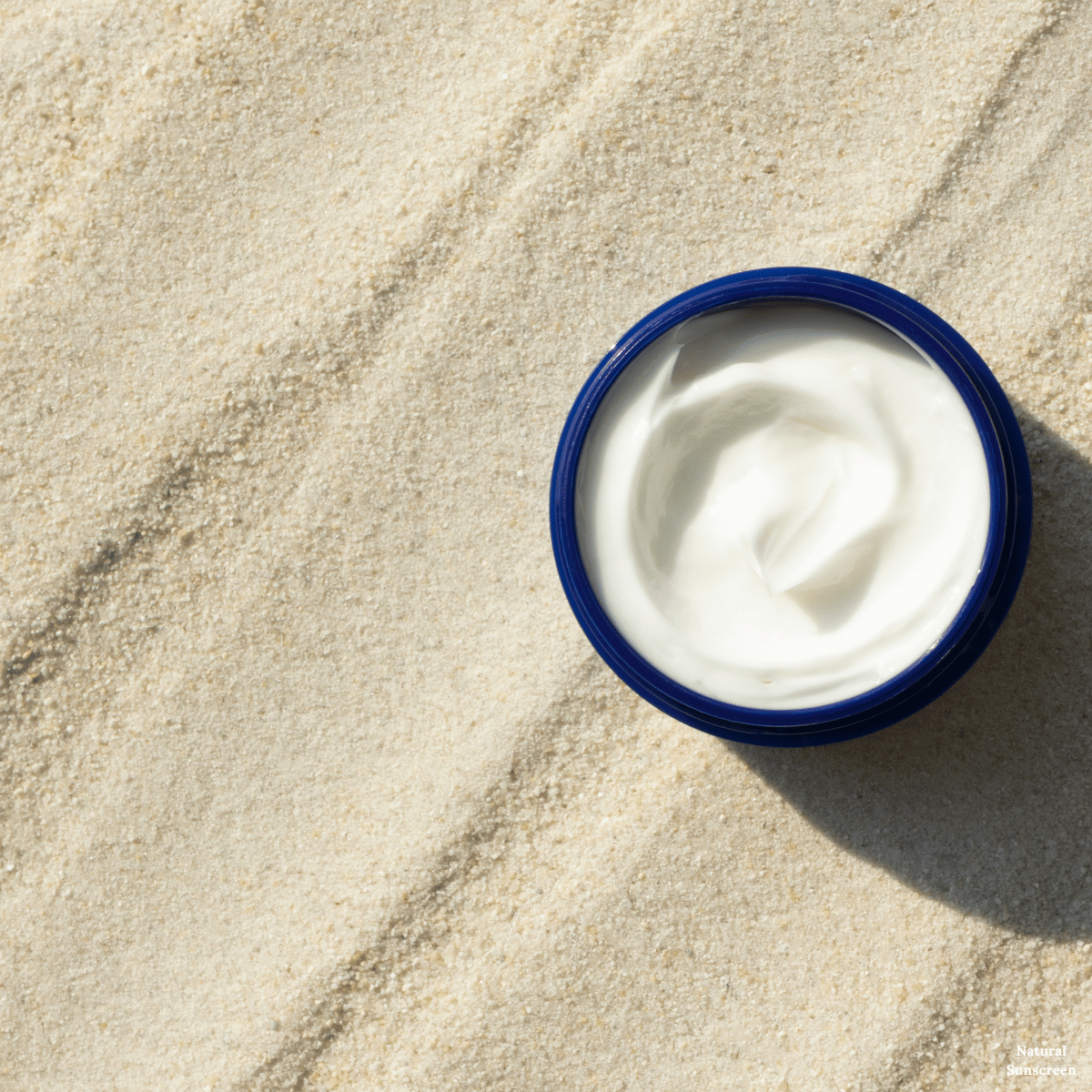
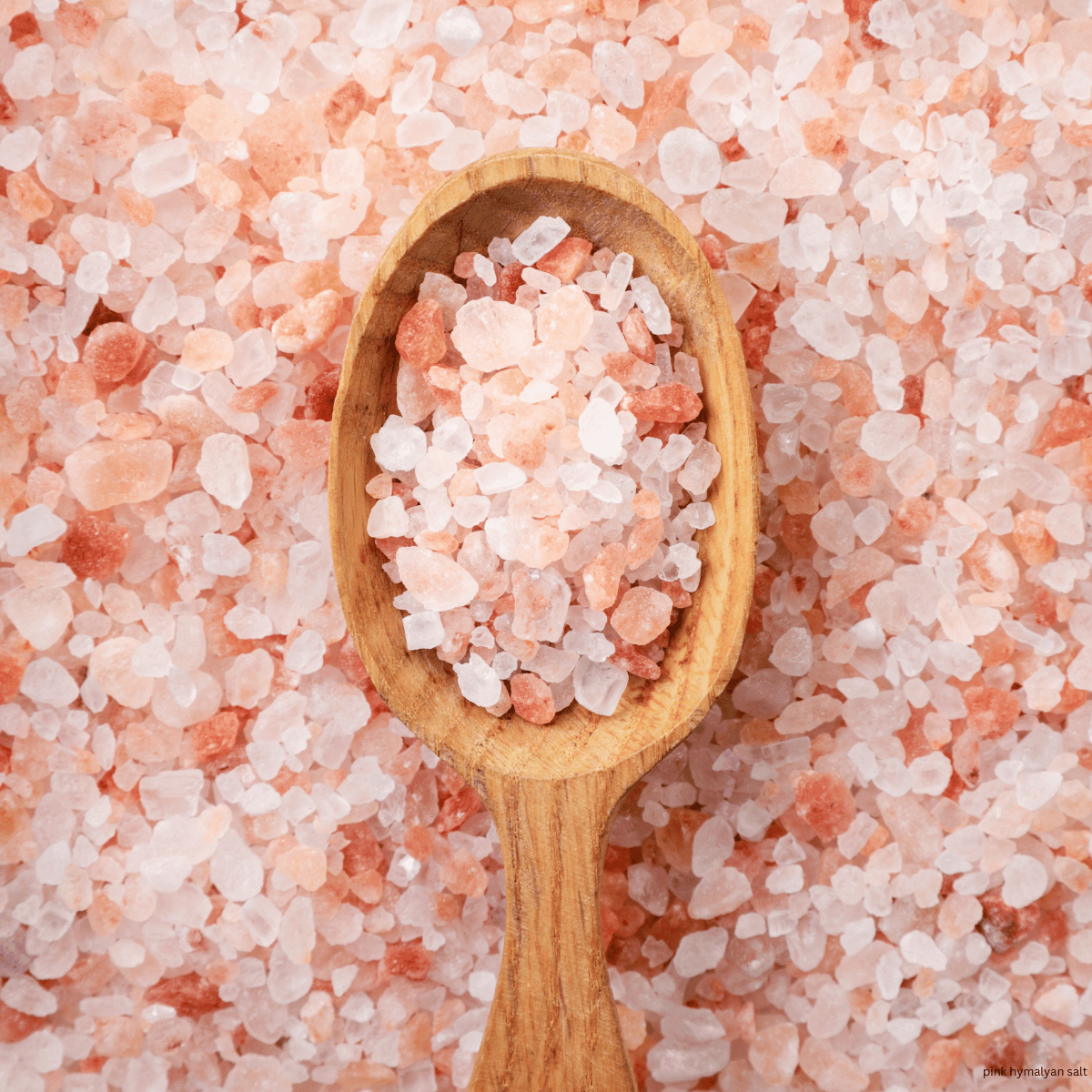
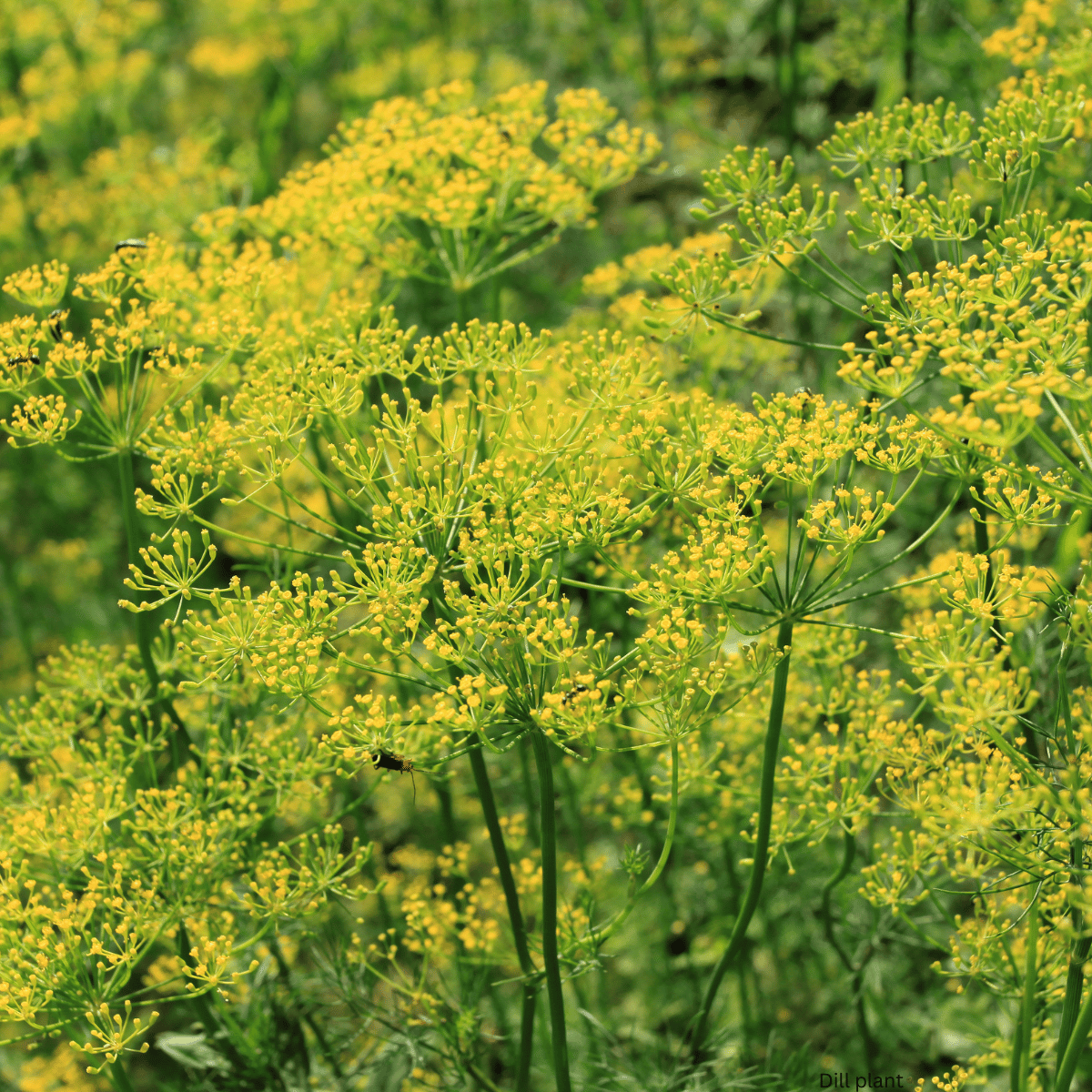
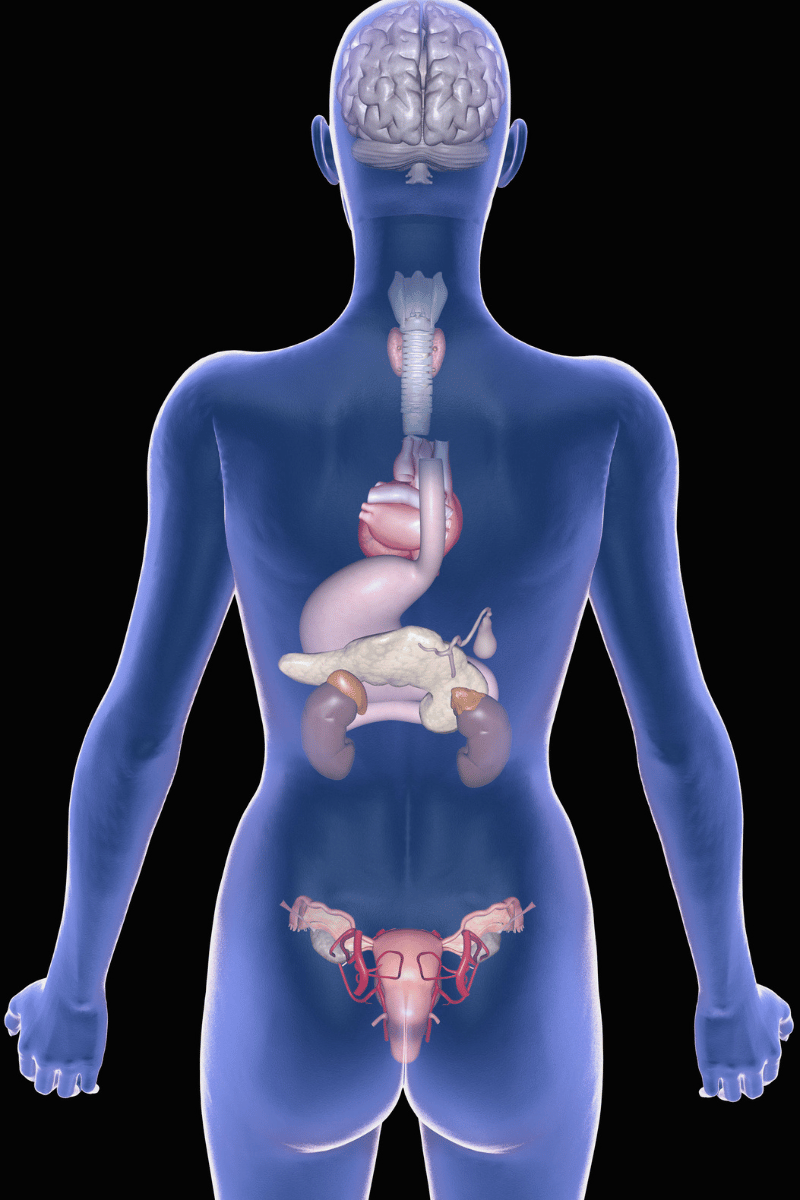


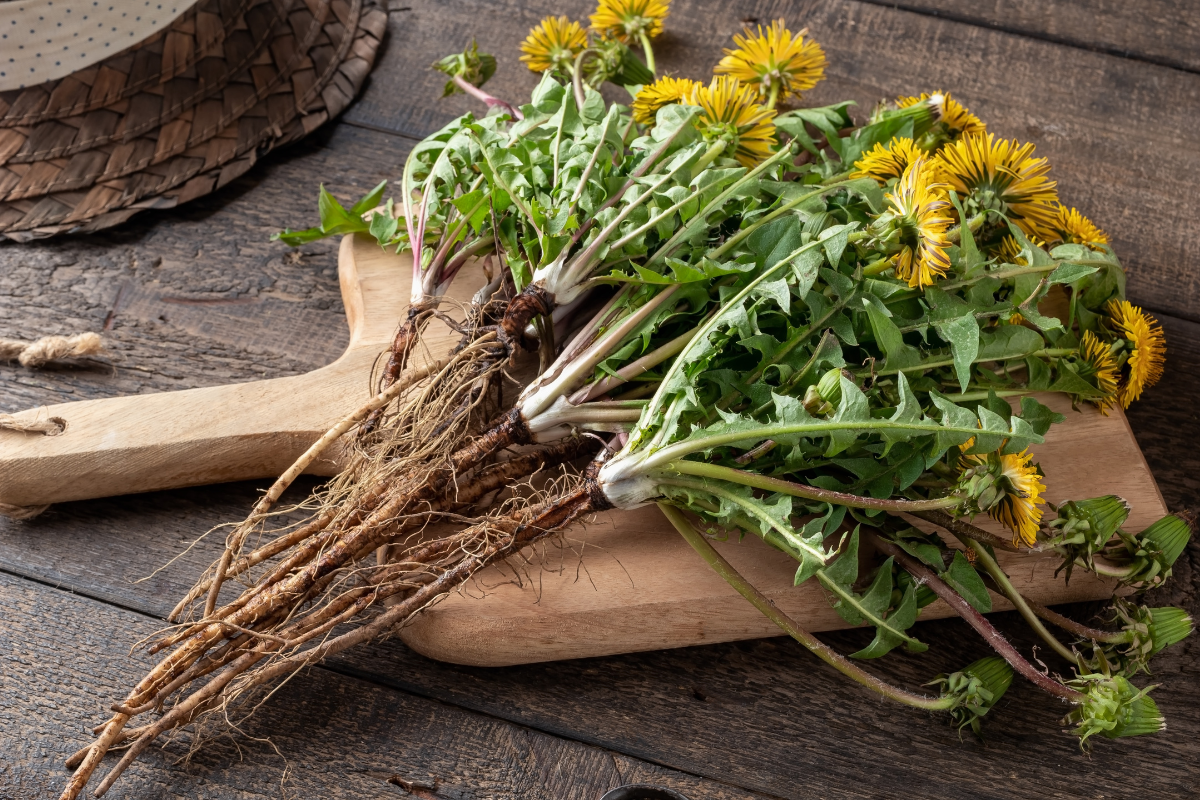
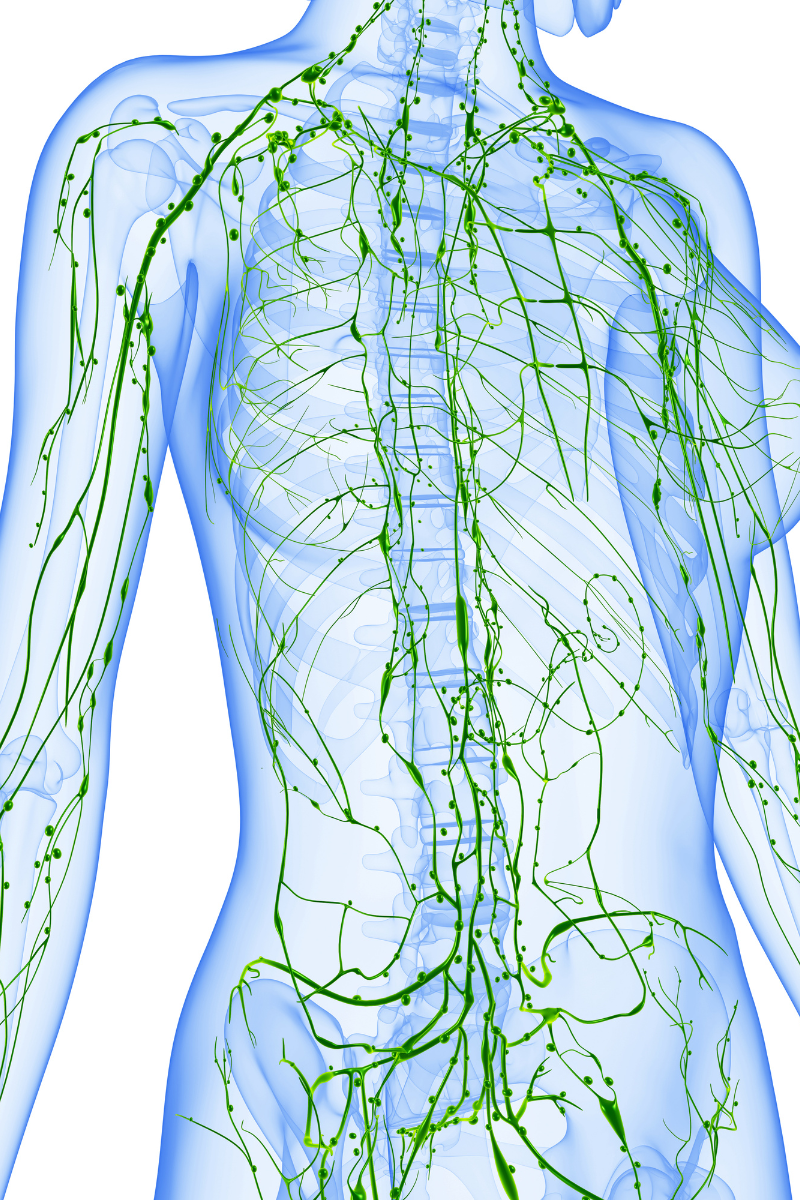
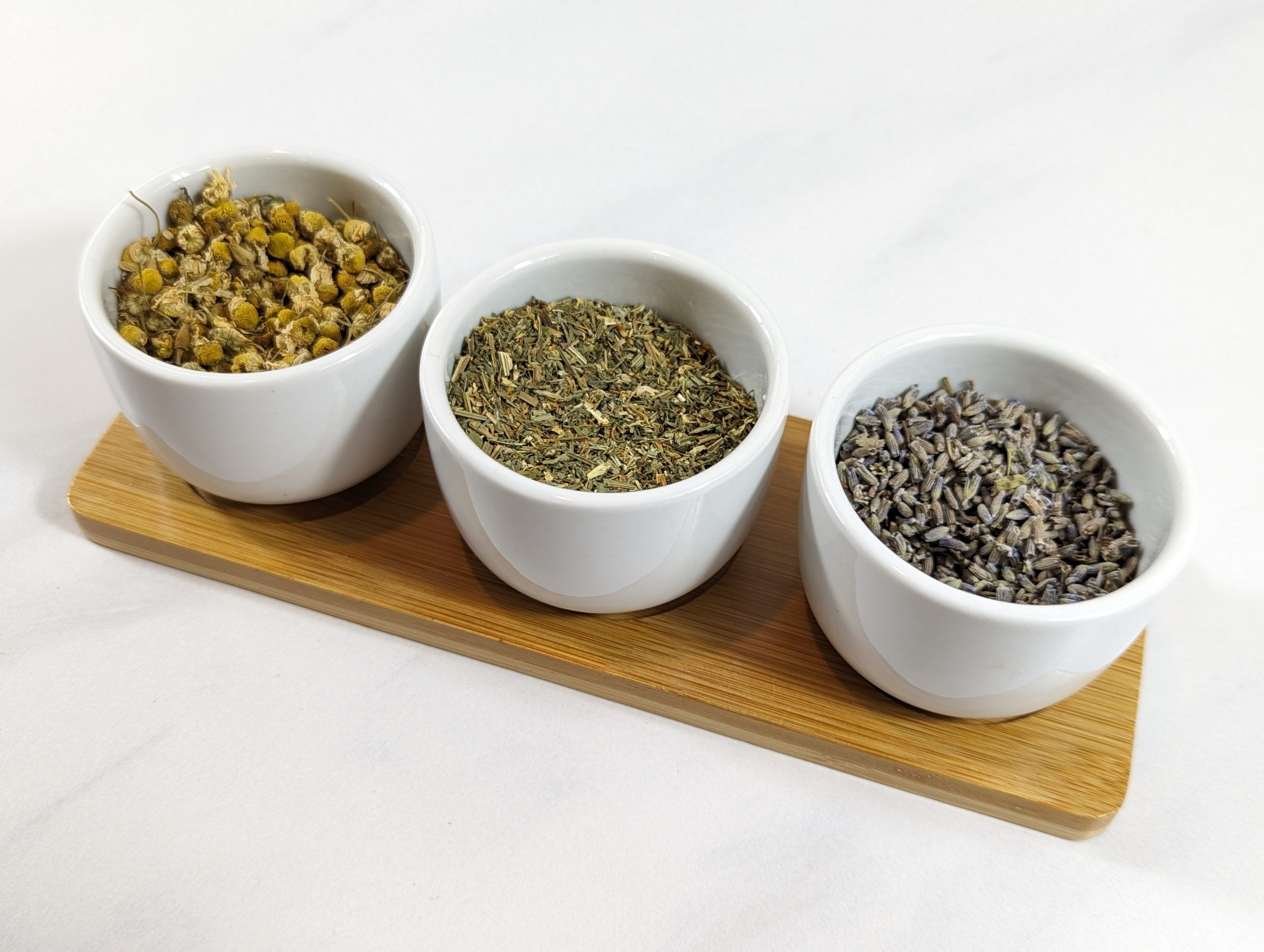
This is super helpful! Thank you for sharing! 🙂
This is so informative thank you! saving this for reference!
This was such an interesting post! Than you for breaking each herb down. As someone who is new to medicinal herbs, I really appreciate this! Great post.